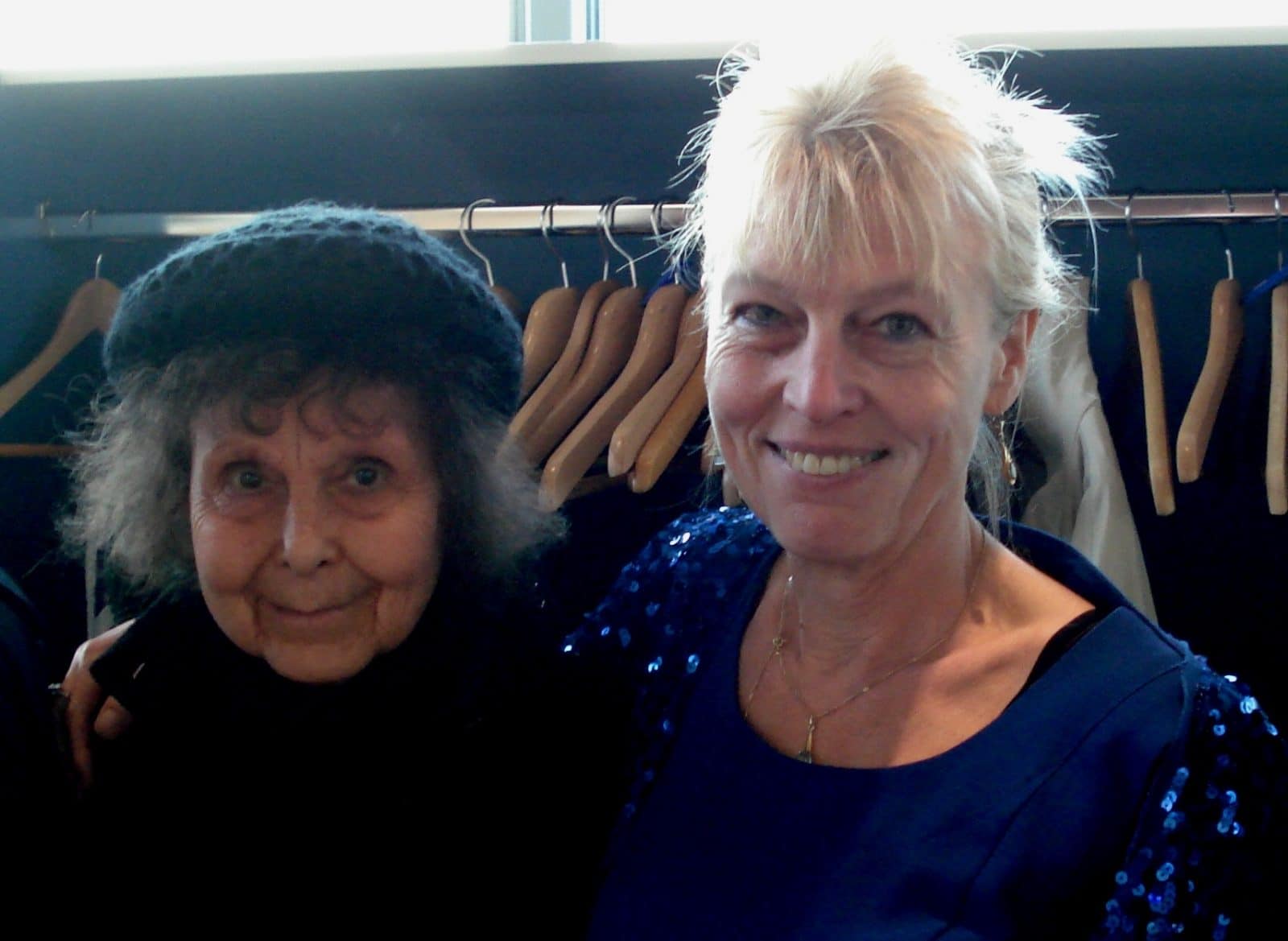In 1989 plaatste het Holland Festival componisten uit de Sovjet-Unie centraal. De muziek van Galina Oestvolskaja en Sofia Goebaidoelina sloeg in als een bom. De dames bleken here to stay, hoewel zij zich bewegen op twee uitersten van onze klankperceptie. Oestvolskaja beukt haar boodschap met monomane gedrevenheid onze trommelvliezen in, Goebaidoelina bedwelmt ons met geheimzinnige ritsel- en fluisterklanken. Voor mij behoren zij tot de interessantste componisten van na de Tweede Wereldoorlog. Donderdag 1 oktober staan zij centraal tijdens de opening van de ‘Donderdagavondserie’ in het Muziekgebouw aan ’t IJ.
Reinbert de Leeuw leidt het Asko|Schönberg in Concordanza, dat Sofia Gubaidoelina in 1971 componeerde. Het zit vol lyrische, om elkaar kringelende wervelingen van blazers en strijkers. In het middendeel gaat een contrabas een meeslepend duet aan met een flageolettenmelodie van de viool; haar vindingrijkheid in het bedenken van ongehoorde klanken is schier eindeloos. Ook in Concordanza weeft de Tataars-Russische klanktovenares intense verstilling en expressief-dissonante klankerupties tot een kleurrijk klanktapijt, dat mij van begin tot eind aan mijn stoel genageld houdt.
Oorsplijtende fortissimi
Hoewel totaal anders van klank, heeft ook de Vijfde pianosonate van haar dertien jaar oudere collega Galina Ustvolskaya een enorme zeggingskracht. Vanwege haar vaak oorsplijtende fortissimi wordt zij wel ‘de vrouw met de hamer’ genoemd. Zoals al haar muziek bestaat ook de sonate grotendeels uit kwartnoten in een traag tempo en zijn er enorme dynamische verschillen. Simpele tweestemmige melodische motieven worden afgewisseld met zwaar dissonante clusters, waarbij de pianist met de vlakke hand op meerdere toetsen tegelijkertijd beukt. Dit monumentale gehamer wordt doorsneden met pianissimo uitgevoerde klankslierten, die echter geenszins behaagziek zijn: zij dwingen tot intens luisteren.
Galina Oestvolskaja leefde als een kluizenares in Sint Petersburg (voorheen Leningrad), maar liet zich in 1994 door Reinbert de Leeuw en Cherry Duyns strikken voor een documentaire in de serie Toonmeesters. Ik studeerde destijds muziekwetenschap en werd getroffen door de uitgebeende, niets ontziende kracht van haar muziek. Toen zij een jaar later plots opdook in het Concertgebouw bij de première van haar Derde Symfonie, stapte ik op onmiddellijk op haar af en overreedde haar tot een interview. Op het afgesproken tijdstip klonk het echter onverbiddelijk: ‘Ich sage nichts!’ Dankzij haar uitgever wist ik haar toch enkele uitspraken te ontlokken en de publicatie in Vrij Nederland betekende mijn doorbraak als muziekjournalist. (Ik vertaalde het artikel bovendien voor het Britse muziekblad Tempo en het Duitse muziektijdschrift VivaVoce.)
Gefluister en geritsel
Zoiets schept een band en voor mij is een concert met Oestvolskaja’s muziek altijd weer een belevenis. Dat geldt ook voor het werk van Sofia Goebaidoelina, wier compositie Nu altijd sneeuw mij in 1993 van top tot teen kippenvel bezorgde. Het gefluister, geritsel en geknisper van rondom ons opgestelde zangers en musici trof zo sterk doel dat ik nog dagen later tintelingen voelde bij de herinnering. Ik heb Goebaidoelina inmiddels vele malen geïnterviewd, voor geschreven artikelen, reportages op Radio 4, bij de viering van haar tachtigste verjaardag en voor mijn biografie van Reinbert de Leeuw. – Dat ik überhaupt ooit aan die monnikenklus begon, wortelt grotendeels in mijn bewondering voor deze twee powerladies, wier muziek ik dankzij hem heb leren kennen.

Het concert a.s. donderdag is voor mij extra interessant, omdat de Nederlandse componist Astrid Kruisselbrink hiervoor een nieuw werk componeerde, Die Klage um Linos, naar de gelijknamige elegie van Rainer Maria Rilke. Kruisselbrink heeft net als Goebaidoelina een sterk gevoel voor klankkleur en weet ruimte en stilte muzikaal te laten spreken. Met Kurtág, van wie ook een stuk wordt uigevoerd, deelt zij het vermogen een stem indringend te laten stamelen. Zoals bijvoorbeeld in de wonderschone liederencyclus Adempauze voor mezzosopraan, fluit en piano uit 2004.
Benieuwd hoe Kruisselbrink zich staande houdt in de confrontatie met de drie Oost-Europese grootmeesters.
